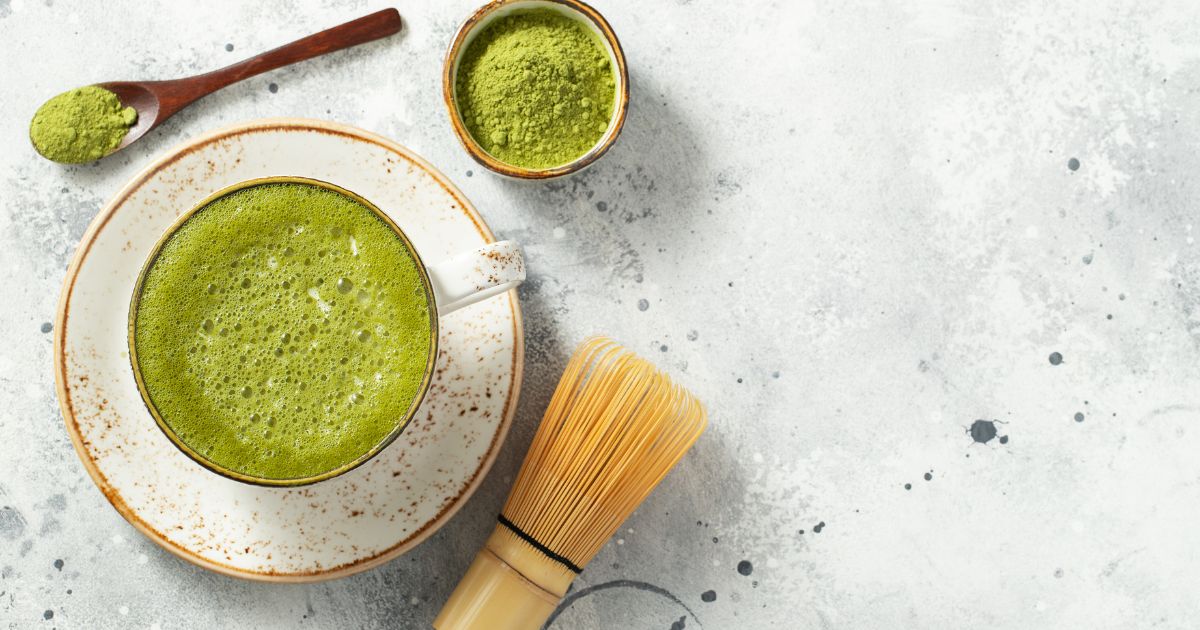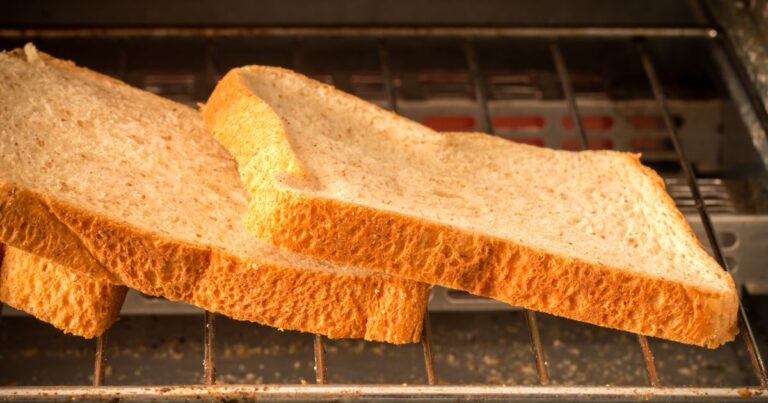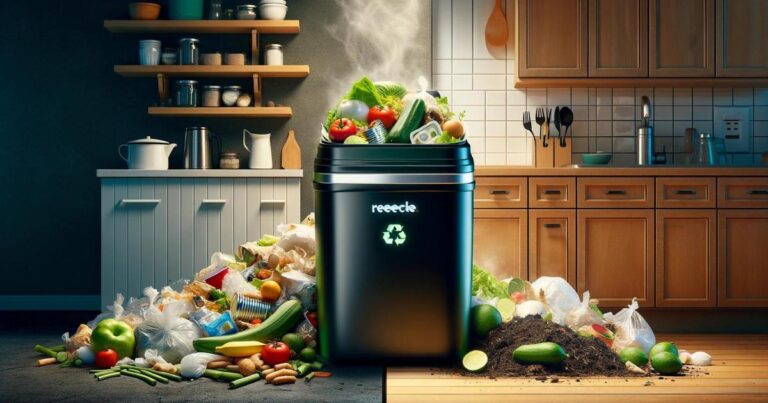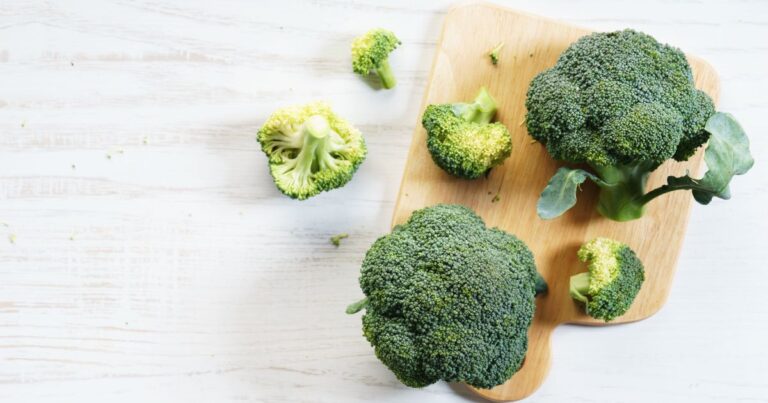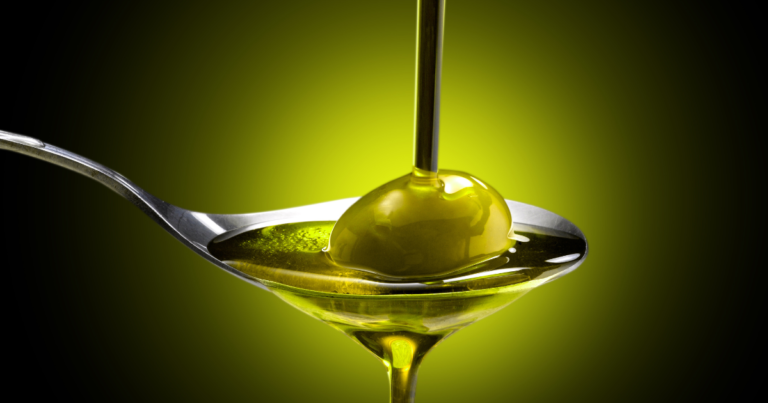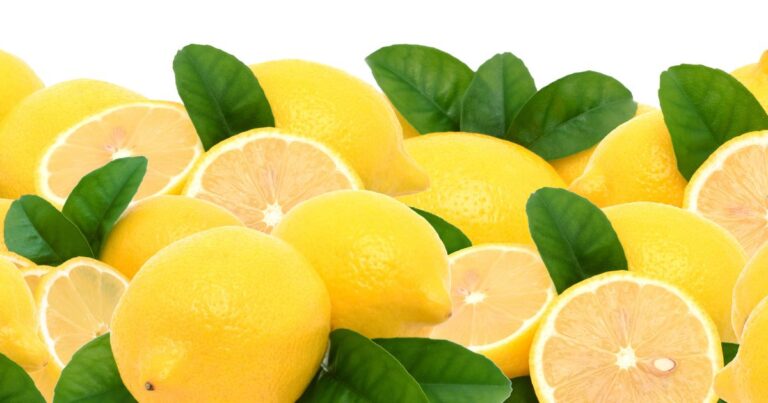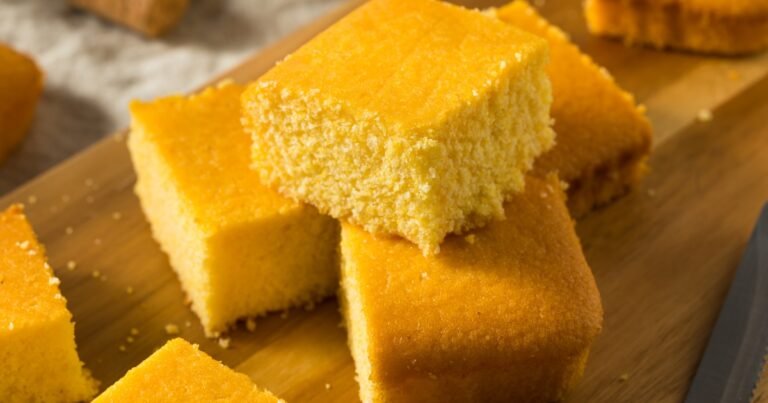Breaking Down The Flavor Profile When Drinking Matcha Tea
You could be interested in trying Matcha for the first time or taking a few sips into your Matcha Tea as you start to wonder, “What Does Matcha Taste Like?” What are these flavors I’m tasting? Is this really what people are drinking nowadays? Matcha Has a distinct Flavor profile that stands out, but if you need help understanding what matcha tastes like, we’re going to break it down one sip at a time.
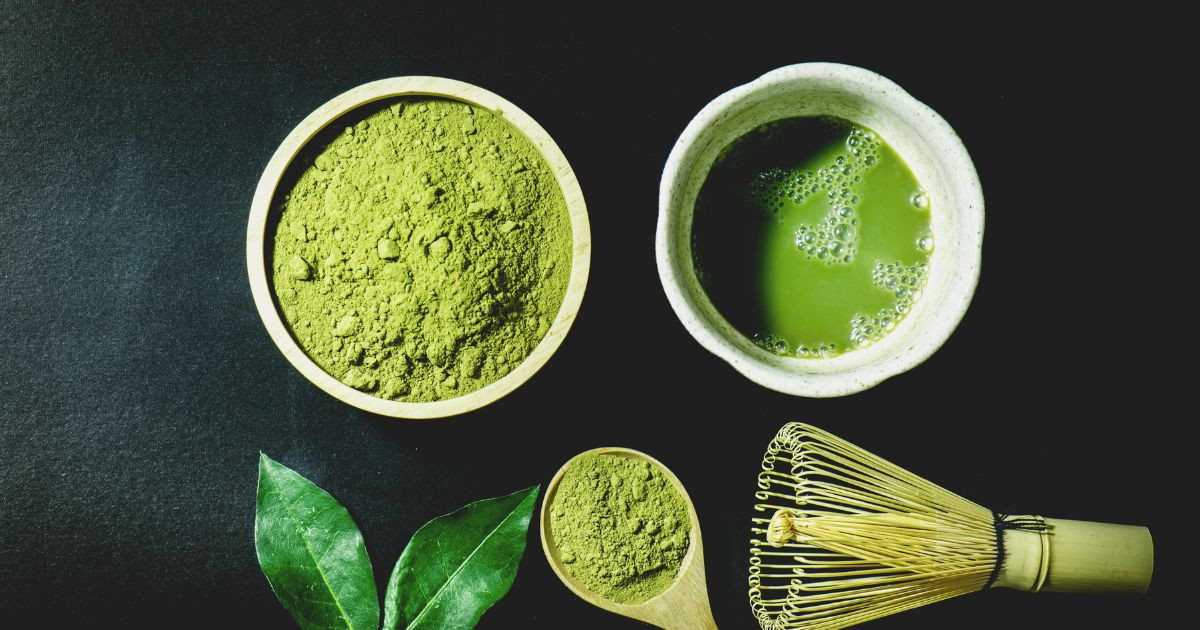
That vibrant green tea powder has taken the world by storm, not just for its eye-catching color but for its unique taste profile that’s as intriguing as its history. If you’re like me, your journey with Matcha started out of curiosity and quickly became a delightful obsession.
As someone who’s whisked more Matcha than I can count and sipped it in every corner of the globe, I’ve realized that describing Matcha’s flavor is like explaining a color to someone who’s never seen it.
It’s complex, rich, and utterly captivating. But fear not, I’m here to guide you through the kaleidoscope of Matcha tastes, from its umami-packed depths to its sweet, grassy notes.
It’s the drink for anyone looking to add a splash of vibrant color and a burst of energy to their day—without the coffee jitters. So, grab your whisk (or just your curiosity) as we explore the wonderful world of Matcha, from its roots in ancient tea ceremonies to the modern Matcha latte that’s taken the world by storm.
And yes, I’ll even spill the beans (or should I say, green tea leaves?) on how to whip up the perfect cup of Culinary Grade Matcha that’ll have you feeling like a Zen master in no time.
Table of Contents
What Does Matcha Taste Like?

Whether you’re a seasoned Matcha enthusiast or new to the scene, understanding its flavor profile is like unlocking a secret garden of taste – full of surprises and delights.
This is the place to be if I’m going to break down the history and uncover the health benefits that make it a superhero among regular green tea. I’ll even share some insider tips on how to whip up the perfect Matcha creation at home. Whether you’re aiming to perfect your Matcha latte game or simply curious about what makes this green tea so special, you’re in for a treat.
The Taste of Matcha

Diving into the flavor profile of Matcha is like exploring a vibrant landscape, where each sip reveals new textures and tastes. It’s a journey of discovery that varies from one batch of Matcha to another but always promises a sensory delight.
Flavor Profile
Umami: The first thing you’ll notice is the profound umami. This savory goodness is the backbone when you drink matcha, providing a richness that’s hard to find in other teas.
Sweetness and Bitterness: Then comes the interplay between sweetness and bitterness. Good quality Matcha strikes a delicate balance, where a subtle sweetness peeks through the initial green, vegetal notes. Matcha taste bitter, when present, isn’t overwhelming but adds complexity, much like the role of bitters in a well-crafted cocktail.
Texture: The texture is something to behold. True culinary-grade Matcha dissolves into a smooth, velvety concoction that feels luxurious on the tongue, which is why it’s perfect for matcha smoothies.
Aftertaste: Finally, the aftertaste, or the finish, leaves you with a lingering sweetness and a clean, green freshness.
Factors Affecting Flavor
Several factors can influence the taste of your Matcha:
Quality of Tea: The grade of Matcha (ceremonial, premium, culinary) affects its flavor. Ceremonial grade offers the most refined taste, ideal for drinking, while culinary grades are best suited for recipes.
Water Temperature: Too hot, and it will scorch the tea, emphasizing bitterness. Aim for cooler water, around 70-80°C (158-176°F), to extract the perfect balance of flavors.
Preparation Method: How you whisk and serve your Matcha can also impact its taste. A proper whisking technique introduces air, making the tea frothy and releasing its full spectrum of flavors.
Understanding these nuances can transform your Matcha experience from merely drinking tea to a moment of genuine culinary appreciation. Whether you’re whisking up a storm for a traditional tea ceremony or crafting a modern Matcha latte, the taste of Matcha is a testament to its versatility and enduring appeal.
Historical Background

The story of Matcha is as rich and textured as its flavor. This green tea powder holds a special place in the hearts of tea enthusiasts and in the cultural tapestry of Japan, where it has been celebrated for centuries.
Originally, Matcha went from China to Japan around the 12th century, brought by monks who used matcha green tea to stay awake during long meditation sessions. They might not have realized then that they were introducing a tradition that would become deeply embedded in Japanese culture.
Japanese green tea Matcha quickly moved beyond its initial religious purposes to become a symbol of luxury and artistry, especially within the context of the Japanese tea ceremony, also known as Chanoyu or Sado.
This ceremony isn’t just about drinking tea; it’s a choreographed art form emphasizing respect, purity, tranquility, and harmony. Each movement is precise, each utensil is chosen with intention, and every cup of Matcha is a gesture of hospitality and mindfulness.

The tea ceremony, with Matcha at its heart, reflects the Japanese philosophy of ichi-go ichi-e, a concept that reminds us to cherish every encounter as it will never recur in the same way again.
This philosophy extends to the preparation and consumption of Matcha, encouraging a mindful experience that appreciates the unique qualities of each cup.
From its origins, just like Chai, this tea was used as a meditative aid to its current status as a global culinary favorite. Matcha has traveled through time, adapting and evolving. It is celebrated in tea ceremonies and as a versatile ingredient in lattes, desserts, and even savory dishes.
Its journey from ancient China to modern cafes worldwide is a testament to its enduring appeal and the timeless pleasure it brings to those who drink it.
Health Benefits of Green Tea

Matcha isn’t just a feast for the senses; it’s also a powerhouse of health benefits. This vibrant green tea powder is packed with nutrients and antioxidants that offer many health advantages, making it a favorite among health enthusiasts and anyone looking to add a wellness boost to their daily routine.
Rich in Antioxidants: Matcha is celebrated for its high concentration of catechins, a type of antioxidant that helps neutralize harmful free radicals in the body. This antioxidant activity is significantly higher in Matcha compared to other green teas because you consume the whole leaf in powdered form, not just the brewed water.
Enhances Mental Clarity and Relaxation: Thanks to its unique combination of caffeine and L-theanine, Matcha provides a ‘calm alertness’ that enhances mental clarity without the jitteriness often associated with coffee. L-theanine promotes relaxation and well-being by increasing the brain’s alpha wave activity, leading to a more alert yet calm state.
Boosts Metabolism and Burns Calories: Drinking Matcha has been shown to increase metabolism and help the body burn fat more efficiently, making it a popular choice for those looking to manage their weight. Unlike many diet aids, Matcha does not put any stress on the body. It doesn’t raise blood pressure or heart rate, making it a safe and natural way to support weight loss.
Detoxifies the Body: The vibrant green color of Matcha comes from its high chlorophyll content, which results from the leaves being shaded before harvest. Chlorophyll not only gives Matcha its beautiful color but also acts as a powerful detoxifier that helps in cleansing the body of toxins and heavy metals.
Supports Heart Health: The catechins in Matcha also support heart health by helping reduce harmful cholesterol levels and lowering the risk of heart disease. Its anti-inflammatory properties further contribute to cardiovascular health.
Improves Skin Health: The same antioxidants that help your internal health also benefit your skin. Matcha’s anti-inflammatory properties can help reduce redness and irritation, while its antioxidants protect the skin from free radical damage, promoting a healthier, more youthful complexion.
Incorporating and pairing Matcha into your daily routine is more than just a delightful culinary experience; it’s a simple yet effective way to enhance your overall health.
Whether you’re enjoying a cup of Matcha tea in the morning or adding Matcha powder to your smoothies, you’re not only treating yourself to its rich, savory taste but also tapping into its myriad health benefits.
Variations of Matcha

Matcha comes in several matcha grades, each suited for different uses. Understanding these variations is key to choosing the right Matcha for your needs, whether you’re whisking up a traditional tea or cooking a culinary masterpiece.
Ceremonial Grade
Description: Known for being the highest quality Matcha, traditionally used in Japanese tea ceremonies. It’s made from the youngest tea leaves, with stems and veins removed, resulting in a smoother and more vibrant green powder.
Taste Profile: Ceremonial-grade Matcha has a delicate, sweet flavor with minimal bitterness, making it ideal for traditional tea preparation where Matcha is the star.
Best Use: Sipping as tea, mixed with hot water alone, to fully appreciate its nuanced flavor.
Premium Grade
Description: A step below ceremonial grade, premium grade Matcha is still high quality but slightly less refined. It’s suitable for daily consumption and balances quality and price well.
Taste Profile: It has a slightly more robust flavor than ceremonial grade, with a balance of sweetness and bitterness. The vibrant green color may not be as bright as the ceremonial grade.
Best Use: Great for both traditional tea and Matcha-based drinks like lattes or smoothies, where its flavor complements other ingredients.
Culinary Grade
Description: Culinary grade Matcha is intended for cooking and baking. It’s made from leaves picked later in the harvest, resulting in a bolder flavor and a darker color.
Taste Profile: This grade is more astringent and robust, making it perfect for recipes where Matcha needs to stand out against other ingredients.
Best Use: Ideal for Matcha-flavored dishes, such as cakes, cookies, ice creams, and even savory dishes. Its strong flavor ensures that the Matcha taste is prominent in your culinary creations.
How to Make Perfect Matcha

Creating the perfect cup of Matcha is an art form, but with a few tips and the right tools, anyone can master it. Here’s how to ensure your Matcha is delicious every time:
Sift the Matcha: Clumps can make your tea grainy. Sifting the Matcha powder through a fine sieve can create a smoother tea.
Use the Right Water Temperature: Boiling water can make Matcha bitter. Aim for water around 70-80°C (158-176°F) for the best taste.
Whisk Properly: Use a bamboo whisk (chasen) vigorously in a W or M motion to create a frothy, smooth texture. This aerates the tea, releasing its full range of flavors.
Quality Matters: Start with high-quality Matcha. The better the quality, the more enjoyable the taste.
Proportions Are Key: A standard serving is 1 teaspoon (2 grams) of Matcha powder to 2 ounces (60 milliliters) of water. Adjust according to your taste preference.
Attention to these details can elevate your Matcha experience from simply drinking tea to a moment of genuine culinary delight. Whether you’re enjoying a morning ritual or sharing the experience with friends, the perfect cup of Matcha is a testament to the art of tea.
Quick Recipe: Matcha Latte

Now that we’ve explored the nuances of Matcha’s flavor, its rich history, health benefits, and how to choose and prepare it perfectly, let’s put that knowledge into action with a simple yet delicious Matcha Latte recipe.
This beverage combines Matcha’s traditional fine powder taste with milk’s creamy texture, creating a perfect harmony of flavors. Matcha lattes are an excellent way to start your morning or to enjoy as a mid-afternoon pick-me-up.
Ingredients:
One teaspoon (2 grams) of ceremonial or premium-grade Matcha powder
2 ounces (60 milliliters) of hot water (about 70-80°C or 158-176°F)
8 ounces (240 milliliters) of your choice of milk (dairy or plant-based)
Optional: Sweetener of choice (honey, sugar, maple syrup)
Instructions:
Sift the Matcha: Start by sifting your Matcha powder into a bowl to remove clumps. This ensures a smooth latte.
Whisk the Matcha: Add the hot water to the sifted Matcha. Using a bamboo matcha whisk, whisk vigorously in a W or M motion until the tea is frothy.
Heat the Milk: Warm your chosen milk in a saucepan over medium heat or a microwave, careful not to let it boil. If you have a milk frother, use it to froth the milk until it’s creamy and slightly bubbly.
Combine and Serve: Pour the frothy Matcha into a mug, followed by the warm, frothed milk. If you prefer a sweeter latte, stir in your sweetener to taste.
Garnish and Enjoy: For an extra touch, sprinkle a little Matcha powder on top as a garnish. Sit back, sip, and savor the creamy, comforting flavors of your homemade Matcha Latte.
This Matcha Latte recipe is a testament to the versatility of Matcha, allowing you to enjoy its unique flavor profile in a new, indulgent way. It’s a perfect example of how traditional and modern culinary practices can blend to create something extraordinary.
Whether you’re a long-time Matcha lover or new to its charms, this latte is bound to become a favorite. Try to drink tea with oat milk or almonds for a dairy-free option.
Conclusion
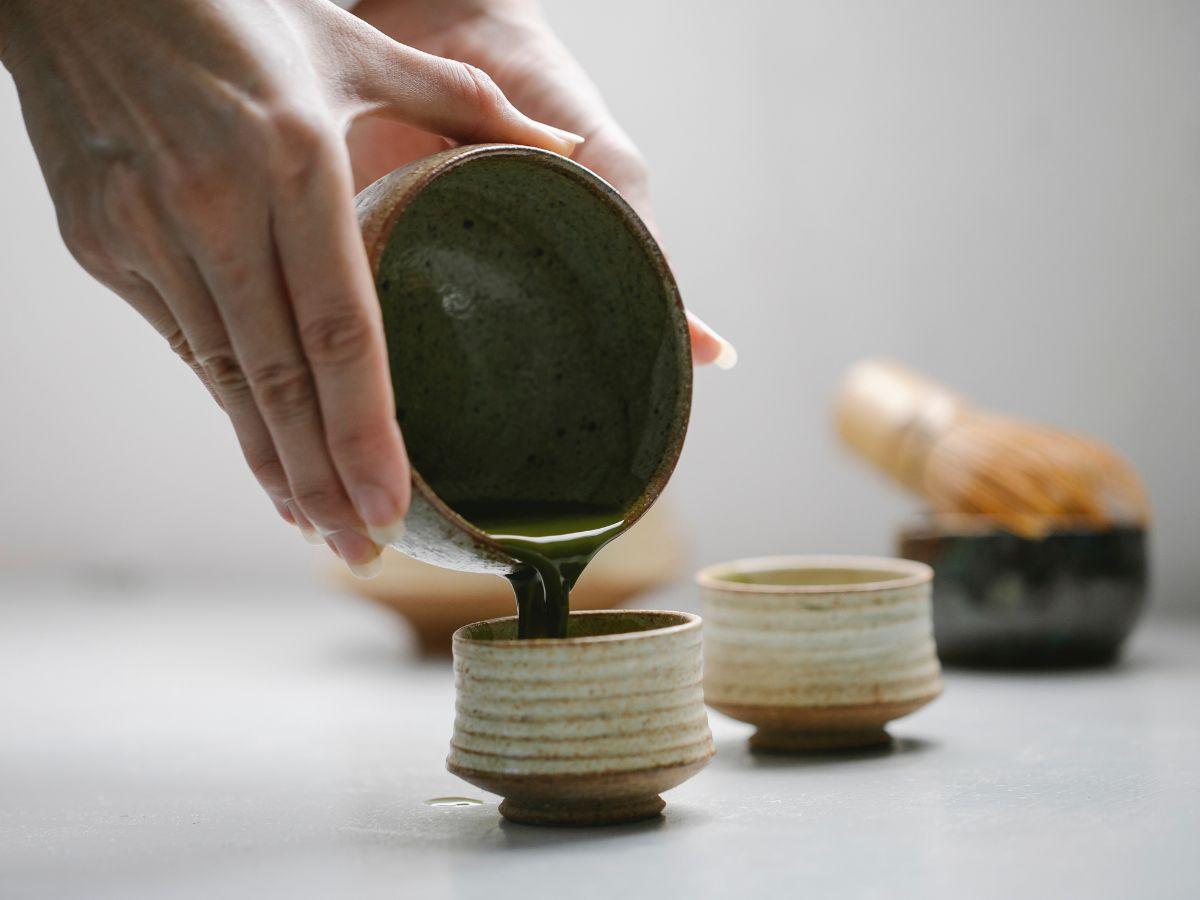
Exploring the world of Matcha is a journey of flavor, history, and culture. From its complex taste profile to its impressive health benefits and versatile uses, Matcha offers something for everyone.
By understanding how to select, prepare, and enjoy Matcha, you can unlock a world of culinary possibilities and embrace a tradition that has captivated people for centuries.
Remember, the perfect cup of Matcha is not just about the technique but the experience it brings — a moment of tranquility, a burst of energy, and a connection to a rich cultural heritage.
So, whisk up your Matcha, take a deep breath, and revel in the art of tea. Who knows? Your next cup could be the start of a new tradition in your own life. Cheers to the great flavor of Matcha!
FAQ and Additional Information
What does matcha taste similar to?

Matcha has a unique taste profile distinguishes it from other types of tea and flavors, making direct comparisons a bit challenging. However, to give you a sense of its flavor and more familiar tastes, here are a few points of comparison:
Green Vegetal Notes: Matcha’s taste can be reminiscent of certain green vegetables, like spinach or kale, due to its grassy and slightly sweet undertones. The vegetal quality is pronounced, giving it a fresh, rich, full-bodied, green flavor.
Seaweed: Some people find that Matcha shares a certain umami quality with seaweed, particularly nori (the type used in sushi rolls). This is due to L-theanine, an amino acid that contributes to Matcha’s savory, umami flavor, similar to the depth found in seaweed.
Dark Chocolate: The subtle bitterness of high-quality Matcha can be compared to that of dark chocolate. When balanced with Matcha’s natural sweetness, this bitterness creates a complex flavor profile similar to dark chocolate’s rich, satisfying taste, especially those with higher cacao content.
Nutty and Creamy Notes: While not the same, the texture and mouthfeel of Matcha, along with its slight nuttiness, can remind one of the particular nut butter or creamy dishes rich in umami. The smooth, velvety consistency of well-whisked Matcha adds to this comparison.
It’s important to note that the flavor of Matcha can vary significantly depending on its quality, preparation, and whether it’s served alone or in a mixed beverage like a Matcha latte. High-grade ceremonial Matcha tends to have a more refined taste, balancing umami, sweetness, and bitterness.
At the same time, culinary-grade Matcha might lean more towards bitter and robust flavors, making it suitable for cooking and baking where it can blend well with other ingredients.
Does Matcha Tea Taste Good?
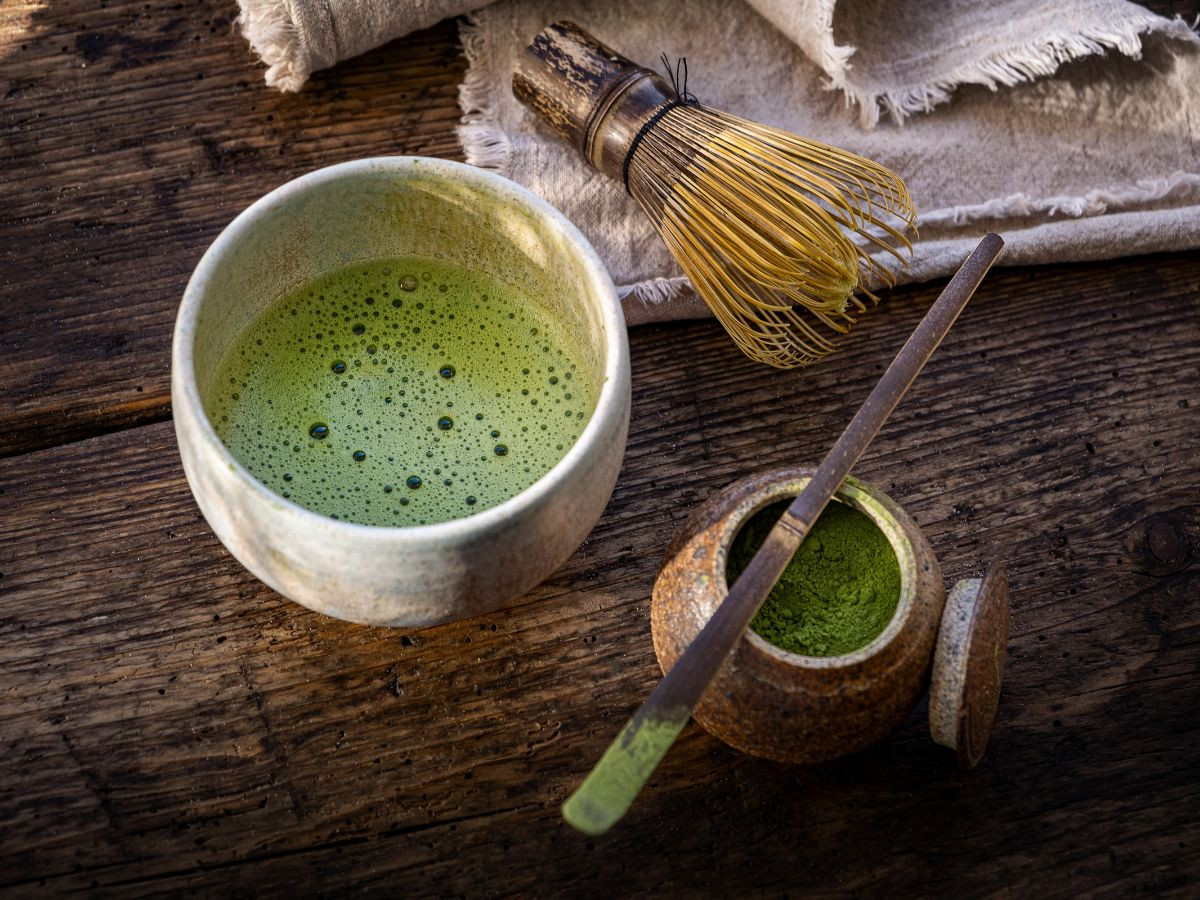
Whether Matcha tea tastes good is mainly subjective and depends on individual preferences. Many people enjoy the unique flavor profile of Matcha for its depth and complexity, which includes a rich umami taste, a delicate balance of natural sweetness and bitterness, and a creamy texture when appropriately prepared.
The taste of Matcha is distinct from other teas due to its preparation and consumption method, where the powdered leaf is whisked with water, allowing one to consume the whole leaf rather than just an infusion.
Matcha offers a more intense flavor experience for those who appreciate green tea, characterized by its grassy aroma, vegetal notes, and lingering sweet aftertaste. Its rich, smooth, and slightly astringent taste can appeal to those who enjoy exploring different tea varieties and flavors.
However, some may find Matcha’s flavor profile, especially its bitterness, an acquired taste. The key to enjoying Matcha lies in its quality and preparation. High-quality ceremonial-grade Matcha, made from young tea leaves and carefully processed, tends to have a more refined flavor with less bitterness.
How you prepare Matcha also influences its taste; using the correct water temperature and proper whisking technique can make a smoother and frothier tea, enhancing its natural flavors.
For newcomers to Matcha, trying it in different forms, such as a latte or a sweetened drink, can be a good introduction before moving on to the traditional, unsweetened version.
Over time, many people have come to appreciate and crave the unique taste of Matcha for its depth and the sense of well-being it brings.
Why Does Matcha Taste Fishy?
Matcha tasting “fishy” is not a characteristic of high-quality Matcha and is generally considered an indication of lower quality or improperly stored Matcha. Here are a few reasons why Matcha might have a fishy taste:
Quality of the Matcha: Lower-quality Matcha, often produced from older leaves or less carefully processed, can develop an undesirable taste. High-quality ceremonial-grade Matcha, made from the youngest tea leaves, should have a fresh, vegetal, and slightly sweet taste without any fishiness.
Storage Conditions: Matcha is sensitive to light, air, and heat, which can degrade its quality. If Matcha is not stored correctly, for example, in an airtight container away from direct sunlight and at a cool temperature, it can develop off-flavors, including a fishy taste. This degradation is partly due to the oxidation of the fatty acids in the tea leaves.
Presence of Amino Acids: Matcha is rich in amino acids, including L-theanine, contributing to its umami flavor. Umami is a savory taste that is also present in foods like seaweed and some fish. Some might perceive it as “fishy,” especially if the Matcha is of lower quality or has been stored improperly, leading to an imbalance in its flavor profile.
Water Quality: The water quality used to prepare Matcha can also affect its taste. Tap water with high chlorine content or other impurities can alter the delicate flavors of Matcha, sometimes resulting in an unpleasant taste.
To avoid a fishy taste in your Matcha, it’s important to purchase high-quality, ceremonial-grade Matcha from a reputable source, store it properly, and use good-quality water for preparation.
High-quality Matcha should offer a rich, complex, vegetal taste profile, slightly sweet and umami without any off-putting tastes.

